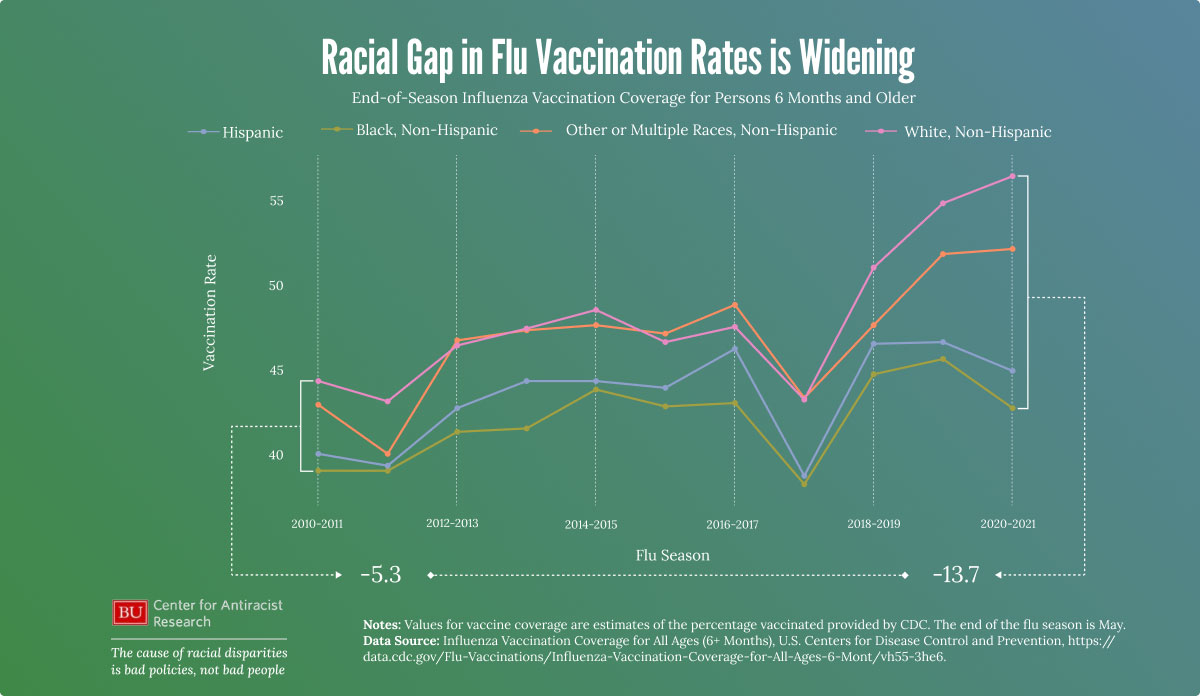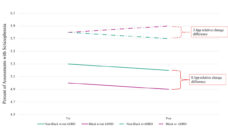The Centers for Disease Control and Prevention (CDC) ranks flu and pneumonia as one of the top ten causes of death in the U.S. CDC recommends that everyone older than six months receive a flu vaccine each year. Researchers estimate that flu vaccines can lessen the chance of contracting the flu by 40% to 60%. So, it is important that everyone who wants to get a flu vaccine has access to it.
However, vaccine access and disease monitoring are not always equal for racial minorities and disadvantaged groups. There are racial disparities in routine vaccination coverage in the U.S. and poor communities are often missed in traditional flu surveillance systems. Also, Black, Hispanic, and American Indian or Alaska Natives experience more severe flu illness.
We downloaded and visualized flu vaccination trends using data from FluVaxView, a vaccination data dashboard published by the CDC. From 2010 to 2020, Hispanics and non-Hispanic Blacks were less likely to get a flu vaccine compared to other non-Hispanic populations. During the 2020-2021 flu season, only 44.9% of Hispanics and 42.7% of non-Hispanic Blacks were vaccinated. In comparison, 56.4% of non-Hispanic White and 52.1% of other non-Hispanic populations were vaccinated. The difference in vaccination rates between non-Hispanic Whites and non-Hispanic Blacks has more than doubled in the past ten years, from 5.3% during the 2010-2011 flu season to 13.7% in 2020-2021.
Much has been written about the importance of using effective strategies to increase access to vaccines and ensure equitable vaccine distribution during the pandemic. These recommendations include working with trusted community health workers and community leaders and bringing vaccines to individuals and communities who face barriers in access. The same policy recommendations are relevant to the distribution of flu vaccines. To increase vaccine uptake, Black, Hispanic, and Indigenous people who experience the highest flu burden must be prioritized.
Databyte via the Center for Antiracist Research
Public Health Post is collaborating with researchers at the Center for Antiracist Research Racial Data Tracker to produce a series of articles focused on structural racism and health. This is the first article in the series.
The goal of the Racial Data Tracker is to collect, analyze, and publicly share data on racial inequities and disparities to communities and individuals interested in using racial data for research, advocacy, education and policy. The data will be available through downloadable data tables, infographics, and interactive visualizations. The project will publicly launch in the Spring of 2023.















